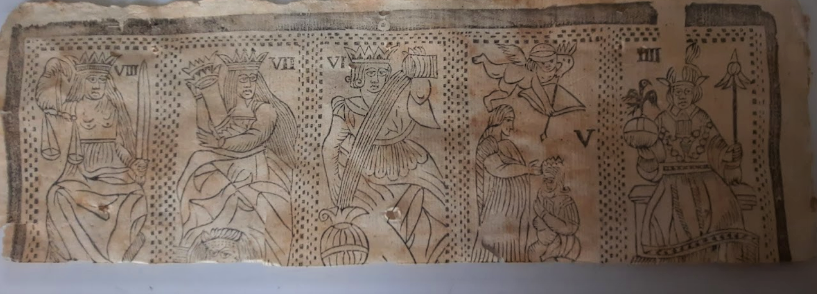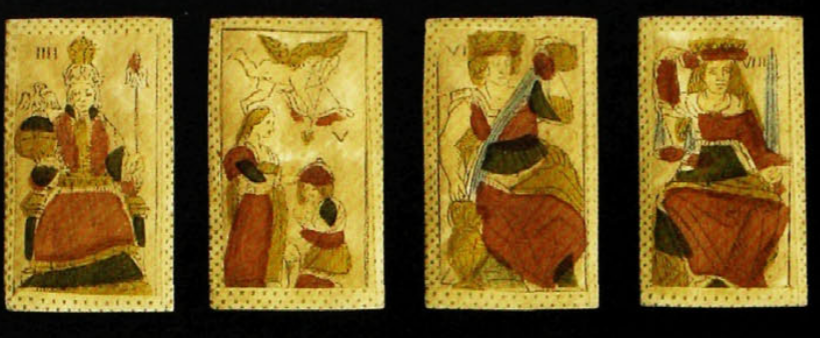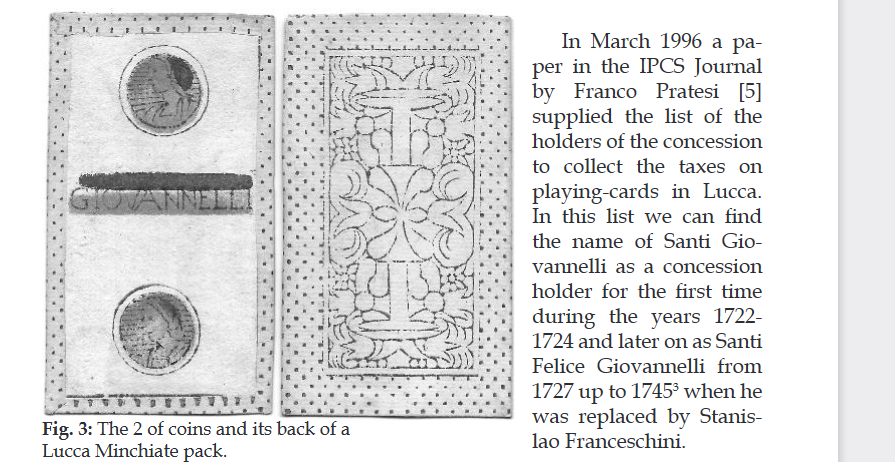Please, Huck, nobody has so much as speculated that these cards might be part of a Lucca tarocchi. The idea is absurd, even without those cards, because of the cavaliers. It is perhaps part of a Lucca minchiate.8 Justice, 7 Force, 6 Temperance, 5 Love, 4 Emperor is part of the Minchiate order. These 5 cards appear not in the Lucca Tarocchi.
I do not see that the presence of French writing shows much. Italy had lots of diplomats and tourists from France (also the other way, e.g. Marie de' Medici), and some of them would buy local curiosities. For example Charles Rainsford, an English naval officer, picked up a minchiate pack in Naples, he said, in 1771. More precisely, in the margin next to a discussion of the 78 card pack, he writes "I have a pack of 93 from" - i.e. an incomplete deck, so useless for playing - and on the next, at the bottom, a line separating it from the rest, "I first saw it in Naples, in the year 1771".
viewtopic.php?p=23037#p23037
People with money would buy older rather than newer decks, not to play, but just to look at the pictures, have something historic, and perhaps compare them with French minchiate of the time (yes, we have at least one thread on that). Then it gets discarded.
What is more of interest is when all this was recycled. Rosele, why do you say that the book was bound, with the covers and binding it had before you ripped them apart, before 1700? What's your evidence? If it's good, you really have something (not that you don't already).
P.S. Wait -I'm not so sure about comparing these cards to Rainsford's purchase, because they aren't cards, they're proof-sheets. Did tourists buy proof-sheets? Well, maybe an antiquarian would, or a buyer of bulk lots of printed material, including imported material, which he would then sort and try to sell. Etteilla got his start in that trade. The notes seem to relate to the cards. Otherwise I'd agree that it's just standard recycling in the same general region. It's a puzzle.




